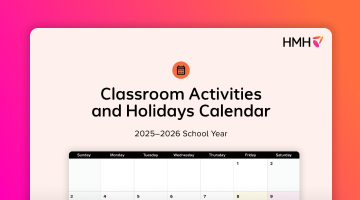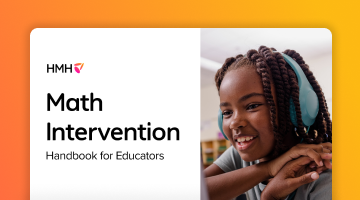
It’s been nearly a month since we published the Educator Confident Report (ECR). In that time, we’ve explored what’s driving the uptick in confidence, the role of technology in the classroom, and how AI can support (not replace!) great teaching.
Today, I want to step back and ask: what does all of this mean for policymakers and education leaders? If confidence is on the rise, how do we sustain it? And more specifically, what kind of policies will ensure that AI is used thoughtfully, equitably, and always in service to student learning?
AI tools and resources should serve teachers first.
Senior Vice President, Policy and Government Affairs at HMH
Here’s what the data—and the educators themselves—are telling us:
Put teachers at the center.
- AI tools and resources should serve teachers first. We know that effective teaching and learning are built on strong teacher-student relationships. AI is most beneficial when it amplifies educators’ capacity to connect with and support students.
- Educators should be involved in setting the vision. Working together, states, districts, and education leaders can develop a vision for AI’s role in teaching and learning, focused on how AI can help all students master grade-level content while keeping humans at the center of the learning experience. Developing this vision, however, should not be rushed. Leaders should be intentional in identifying teacher and student needs before rushing to adopt AI tools.
Invest in educator capacity.
- Time and training matter. Educators see AI as a valuable tool, but only 11% reported receiving “a lot” of training on AI, and nearly all (91%) educators are at least somewhat open to more AI training. Rather than using AI being just one more thing added to teachers’ already long list of responsibilities, states and districts should provide time and professional learning opportunities to support them in learning how to effectively incorporate AI into their teaching.
- Prepare educators to teach ethical AI use. Teachers need support to help students navigate AI responsibly. They should also be equipped to reinforce clear guardrails to ensure AI enhances, rather than undermines, the learning experience. Teacher prep programs and districts should provide learning opportunities that support educators’ ability to guide students in an increasingly AI-driven world.
Establish protocols and coherence
- Protect student data and coherence. With 87% of educators saying all AI users should be taught ethical use, state and district leaders must provide clear expectations and support around student data and privacy protection. Educators shouldn’t be left to figure this out on their own. Clear and consistent guidance can help build public trust and educator comfort.
- Bring order to the chaos. Right now, AI adoption is often happening classroom by classroom, tool by tool. District and state leaders need to move beyond a “Wild West” approach and create coherent strategies that give all students equitable access to safe, effective AI use.
The short story here is that AI should not be a separate strategy; it should be part of the broader vision for teaching and learning—always with the goal of helping all students master grade-level content. And while the pace of innovation can feel dizzying, schools shouldn’t be rushing their adoption solely out of fear of falling behind. A thoughtful, intentional approach will serve educators and students best.
***
For more articles on trends in education from experts, subscribe to HMH's LinkedIn newsletter, Policy in Motion.
HMH AI Tools are designed to teach with you, not for you.












